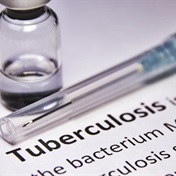In the article Johns Hopkins tuberculosis experts Drs Richard Chaisson and Neil Martinson highlight the dramatic increase in the incidence of tuberculosis in Africa and suggest strategies to prevent and treat the disease.
Chaisson and Martinson report that while in other regions of the world the average number of tuberculosis cases has been stable or declining since 1990, in some African countries rates of TB more than doubled between 1990 and 2005.
“Some of the causes of the increased tuberculosis incidence in Africa are weak health care systems, inadequate diagnostic laboratories and conditions that promote the transmission of the disease. By far though, the most important factor in increasing tuberculosis cases is the HIV epidemic. Tuberculosis is the most common coexisting condition in HIV-infected adults, killing 30 to 40 percent of adults and one in five children”, says Chaisson, who also directs the Johns Hopkins University Center for Tuberculosis Research in Baltimore, USA.
Failure to diagnose and treat TB promptly leads to ongoing transmission of the airborne infection and excess deaths, particularly in those whose immune systems have been weakened by HIV infection. “The current tests and treatment are not enough to stop tuberculosis in Africa, and new approaches are urgently needed,” says Neil Martinson, MB BCh, MPH, deputy director of the Perinatal HIV Research Unit in Soweto, South Africa, and co-author of the NEJM article. “The most commonly used test in Africa – the sputum smear – does not work well to detect TB in HIV-infected patients. Even with the right diagnosis, successful treatment of the disease stands at 70 percent, far below the World Health Organization’s (WHO) goal of 85 percent.”
Weak treatment programs also promote the emergence of drug-resistant strains of the bacteria, increasing the infection risk and mortality rates. In a recent outbreak of extensively drug-resistant TB (XDR-TB) in HIV-infected patients in South Africa, half of the cases were acquired in clinics and hospitals, and included health care workers. The mortality rate exceeded 95 percent.
While research and partnerships to improve diagnostic tests and drugs are under way, Chaisson and Martinson point that better use must be made of existing strategies against tuberculosis; improving laboratory facilities, detecting patients with TB earlier and making highly sensitive culture tests widely available in Africa. If enough emphasis is given to WHO’s “Three I’s of TB control” – intensified case finding, isoniazid preventive therapy and infection control – deaths from tuberculosis in Africa would be greatly reduced, the authors say.
Read more:
HIV/Aids Centre
HIV/Aids Centre
March 2008




 Publications
Publications
 Partners
Partners














